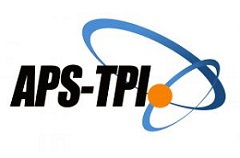Evaluation of the Implementation of the Discovery Learning Model by Utilizing M-Edukasi
Abstract
Keywords
Full Text:
PDFReferences
Afandi, M., Chamalah E., dan Wardani, O.P. (2013). Model dan Metode Pembelajaran di Sekolah. Semarang: UNISSULA PRESS.
Arifin, Zainal. (2013). Evaluasi Pembelajaran: Prinsip, Teknik, Prosedur. Bandung: PT. Remaja Rosdakarya
Asrul, Ananda R., & Rosnita. (2014). Evaluasi Pembelajaran. Bandung: Citapustaka Media
Brown, Emily. (2006). Discovery Learning in the Classroom. Diunduh tanggal 17 Desember 2020, (PDF) Discovery Learning in the Classroom (researchgate.net)
Kemendikbud. (2016). Permendikbud no. 23 tahun 2016: Standar Penilaian Pendidikan. Jakarta: Kemdikbud. Diunduh tanggal 18 Agustus 2020
Manikowati. (2017). The Effectiveness of Task-Based Learning Using Tutorial and Game Interactive Multimedia Instructions in Learning Recount Text Writing to Students with Visual and Auditory Learning Styles. Semarang: Unnes, thesis.
Miles, M.B. & Hubberman, M. (1992). Analisis data kualitatif Terj. Tjejep Rohidi. Jakarta : UI Press
Moleong, L.J., (2008). Metode Penelitian Kualitatif. Edisi Revisi. Bandung: PT. Remaja Rosdakarya
Nikmah, Apriantika K., (2017). Kerucut Pengalaman Edgar Dale. Diunduh tanggal 26 November 2020, https://civitas.uns.ac.id
Novita, F., Irawati, S., dan Jumiarni, D., (2017). Peningkatan Aktivitas dan Hasil Belajar melalui Model Discovery Learning dengan Pendekatan Saintifik. Diklabio: Jurnal Pendidikan dan Pembelajaran Biologi 2(2)
Nurdin Usman. (2002). Konteks Implementasi Berbasis Kurikulum, Jakarta: PT. Raja Grafindo Persada.
Nurdiyansyah & Fahyuni, E.F., (2016). Inovasi Model Pembelajaran Sesuai Kurikulum 2013. Sidoarjo: Nizamia Learning Center
Purwaningrum, J.P., (2016). Kemampuan Berpikir Kreatif Matematis Melalui Problem Based Learning “What’s Another Way” dan Discovery Learning. Teknodika.,16 (01) DOI: https://doi.org/10.20961/teknodika.v14i1.34699
Rahmayani, Aprillia. (2019). Pengaruh Model Pembelajaran Discovery Learning dengan Menggunakan Media Video terhadap Hasil Belajar Siswa. Jurnal Pendidikan., 04 (01). DOI: 10.26740/jp.v4n1.p59—62
Riyaningsih, E., Maryono, & Harini. (2018). Pembentukan Karakter Bagi Peserta Didik Sekolah Menengah Atas Dalam Pembelajaran Seni Tari Melalui Model Discovery Learning. Teknodika, 16 (02) DOI https://doi.org/10.20961/teknodika.v16i2.34778
Uno, Hamzah. (2008). Perencanaan Pembelajaran. Jakarta: Bumi Aksara.
Tachjan. (2006). Implementasi Kebijakan Publik. Yogyakarta: Pustaka Pelajar
Refbacks
- There are currently no refbacks.





.png)













